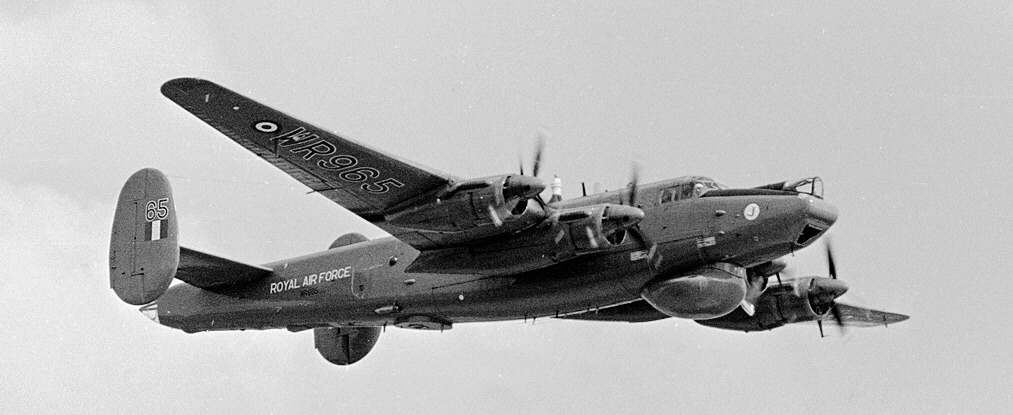
The Avro Shackleton was a long-range maritime patrol aircraft for use by the Royal Air Force and it was developed by Avro from the Avro Lincoln bomber with a new fuselage. It was originally used primarily in the antisubmarine warfare (ASW) and maritime patrol aircraft (MPA) roles, and was later adapted for airborne early warning (AEW), Search and Rescue (SAR) and other roles from 1951 until 1990. It also served in the South African Air Force from 1957 to 1984. The type was named after the polar explorer Sir Ernest Shackleton. With an impressive endurance of nearly 15 hours, a total of 185 Shackletons were built from 1951 to 1958: around 12 are still believed to be intact, with one still airworthy in South Africa, but not flying due to a lack of qualified crew members.
All marks of Shackleton suffered from using the Griffon engines - thirsty for fuel and oil, noisy and temperamental with high-maintenance needs. In 1961, the MR2 variant’s engines needed top overhauls every 400 hours and went through a spate of ejecting spark plugs from their cylinder heads. Apparently it was not unusual to see an engine changed every day in a unit of six aircraft. They were constantly on the cusp of being replaced, but the potentially beneficial Napier Nomad re-engine modification did not happen. During the 1960s, the typical Shackleton crew comprised two pilots, two navigators, a flight engineer, an air electronics officer, and four air electronics operators. During this period, equipment upgrades has become routine in order to keep pace with ever-increasingly capable submarines; separately issues with the fatigue life of the airframe had been identified, leading to multiple programs being carried out to strengthen the aircraft and thus extend its viable service life. In 1966, nuclear depth charges were introduced to the Shackleton's arsenal with the aim of countering the Soviet's development of deep-diving submarines.
Maritime reconnaissance was a large element of the Shackleton's service, this mission was often performed to identify and monitor naval and merchant shipping and to demonstrate sovereignty. During the Indonesia / Malaysia confrontation in the 1960s, Shackletons monitored the seas for vessels involved in arms smuggling and similar operations were conducted in Cyprus; Shackletons operating from bases in Madagascar cooperated with Royal Navy vessels to enforce a United Nation-mandated oil blockade of Rhodesia
The Shackleton would often be used in to perform search and rescue missions and at all times one crew was kept on standby somewhere across the UK for this role. Shackletons were used in the Aden Protectorate during the Radfan Emergency against rebel tribesmen in Colonial Policing Operations when leaflets would be dropped warning the tribes to vacate their properties which would then be bombed after they left.The need to replace the Shackleton was first raised in the early 1960s. The arrival of the Hawker Siddeley Nimrod in 1969 was the end for the Shackleton in most roles but it continued as the main SAR aircraft until 1972. The intention to retire the aircraft was then thwarted by the need for Airborne Early Warning coverage in the North Sea and northern Atlantic following the retirement of the Fairey Gannet. With a new design not due until the late 1970s, the existing AEW radar was installed in modified Shackleton MR2 aircraft, redesignated AEW2, as an interim measure from 1972. The eventual successor to the Shackleton AEW did not arrive until the RAF finally abandoned the Nimrod AEW3 and purchased the Boeing E-3 Sentry in 1991.
John Hutchinson was an RAF pilot flying these iconic British aircraft from an RAF station in Singapore in the late 1950’s on both 205 and 209 Squadrons.

